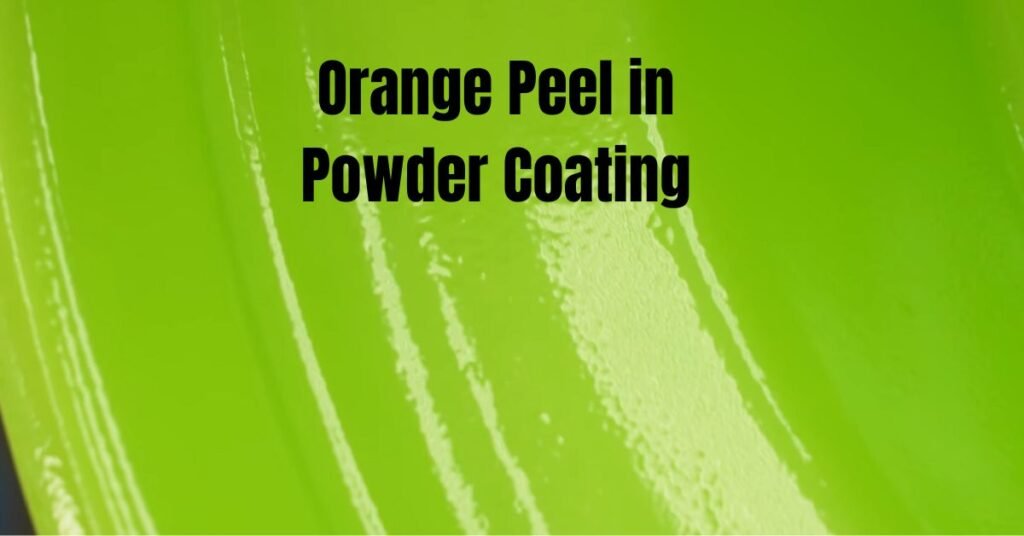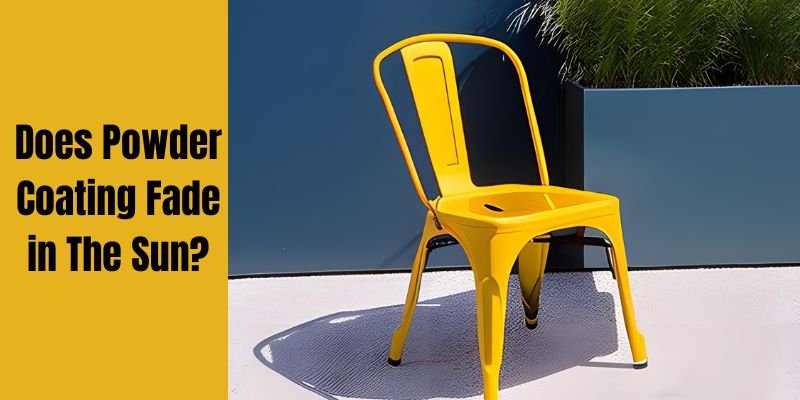Yes, powder coating is an exceptional method for achieving rust-proof surfaces. The process involves applying a dry powder to a metal surface, which is then cured under heat to form a protective layer. This layer acts as a barrier against moisture, chemicals, and environmental elements, effectively preventing rust formation.

Understanding Rust
Rust is a common problem that affects many metal objects, from cars to outdoor furniture. Rust is essentially a form of corrosion that occurs when metal is exposed to oxygen and moisture. When these two elements come into contact with the metal, they react to form iron oxide, which is the reddish-brown substance commonly known as rust.
There are several factors that can contribute to the formation of rust on metal objects. These include exposure to salt water or other corrosive materials, as well as exposure to high levels of humidity or moisture. In addition, scratches or other damage to the metal surface can also make it more vulnerable to rust formation.
One of the most effective ways to prevent rust from forming on metal objects is to apply a protective coating. Powder coating is one such coating that can help to prevent rust from forming. Powder coating is a type of coating that is applied as a dry powder and then cured under heat to form a hard, durable finish.
While powder coating is not 100% rust-proof, it does provide a high level of protection against rust formation. In addition, powder coatings are available in a wide range of colors and finishes, making them a popular choice for a variety of applications.
Overall, understanding how rust forms and how it can be prevented is key to keeping your metal objects in good condition. By taking steps to protect your metal objects from rust, you can help to ensure that they last for many years to come.
Powder Coating and Rust Resistance
Chemical Composition of Powder Coating
Powder coating is a dry finishing process that involves applying a free-flowing, electrostatically charged powder to a surface. The powder is made up of a mixture of resins, pigments, and additives that are melted and fused together to form a durable and protective coating. The chemical composition of powder coating makes it highly resistant to rust and corrosion.
One of the primary ingredients in powder coating is polyester resin. This resin is known for its excellent weatherability and resistance to UV radiation. When combined with other materials such as epoxy, acrylic, or polyurethane, polyester resin forms a tough and durable coating that can withstand harsh environments.
Another key ingredient in powder coating is pigments. These are added to the powder to give it color and to enhance its resistance to fading and chalking. Some pigments, such as zinc oxide, can also provide additional rust protection.
Application Process
The application process for powder coating is a multi-step process that involves cleaning and preparing the surface, applying the powder, and then curing the coating. The cleaning and preparation process is critical to ensuring that the powder coating adheres properly and provides maximum rust protection.
During the application process, the powder is electrostatically charged and sprayed onto the surface. The charged powder particles are attracted to the grounded surface, creating a uniform and even coating. After the powder is applied, the coated surface is heated to cure the coating and create a strong bond between the powder and the surface.
Overall, powder coating is an effective way to protect metal surfaces from rust and corrosion. Its chemical composition and application process make it a durable and long-lasting option for a variety of applications.
Advantages of Powder Coating for Rust Prevention
When it comes to rust prevention, powder coating offers a number of benefits over other coating methods. Here are some advantages of powder coating for rust prevention:
1. Durability
Powder coating is known for its durability and resistance to corrosion. This makes it an excellent choice for rust prevention, as it can withstand exposure to harsh environments, chemicals, and UV rays. Additionally, powder coating is less likely to chip or peel, which can compromise the integrity of the coating and leave the underlying metal vulnerable to rust.
2. Coverage
Powder coating provides excellent coverage and can be applied evenly to all areas of a metal surface, including hard-to-reach areas and corners. This means that the entire surface is protected from rust, not just the visible areas.
3. Versatility
Powder coating can be applied to a wide range of metals, including steel, aluminum, and galvanized steel. This versatility makes it a popular choice for a variety of applications, from automotive parts to outdoor furniture.
4. Environmentally Friendly
Powder coating is an environmentally friendly coating method, as it produces less waste and emits fewer volatile organic compounds (VOCs) than traditional liquid coatings. This makes it a sustainable choice for rust prevention.
Powder coating is an excellent choice for rust prevention due to its durability, coverage, versatility, and environmental friendliness. By choosing powder coating, you can protect your metal surfaces from rust and extend their lifespan.
Limitations of Powder Coating Against Rust
While powder coating is a popular and effective method for protecting metal surfaces from rust, there are some limitations to its rust-proofing abilities. Here are a few factors that can affect the effectiveness of powder coating against rust:
Surface Preparation
The effectiveness of powder coating against rust depends heavily on the quality of surface preparation. If the surface is not properly cleaned, degreased, and pre-treated, the powder coating may not adhere properly, leaving gaps and imperfections that can allow rust to form.
Environmental Factors
Powder coating is not immune to the effects of environmental factors that can contribute to rust formation. Exposure to saltwater, humidity, and other corrosive substances can weaken the protective barrier of the powder coating, allowing rust to form over time.
Damage and Wear
Like any protective coating, powder coating can be damaged or worn down over time through exposure to physical abrasion, impacts, and other forms of wear and tear. If the powder coating is compromised, rust can begin to form in the exposed areas.
Incomplete Coverage
Powder coating can be difficult to apply evenly and consistently, especially on complex or irregularly shaped surfaces. If the coverage is incomplete or uneven, there may be areas where rust can begin to form.
Overall, while powder coating can be an effective method for protecting metal surfaces from rust, it is not a foolproof solution. Proper surface preparation, careful application, and ongoing maintenance are all important factors in ensuring the long-term effectiveness of powder coating against rust.
Comparing Powder Coating to Other Rust-Proofing Methods
When it comes to rust-proofing, there are several methods to choose from. Here’s a breakdown of how powder coating compares to other popular rust-proofing methods:
Powder Coating vs. Paint
Powder coating is often compared to paint when it comes to rust-proofing. While paint can offer some protection against rust, it is not as durable or long-lasting as powder coating. Powder coating creates a hard, durable finish that is resistant to scratches, chips, and corrosion. Additionally, powder coating can be applied more evenly than paint, which can help prevent rust from forming in the first place.
Powder Coating vs. Galvanizing
Galvanizing is a process that involves coating steel with a layer of zinc to protect it from rust. While galvanizing can be effective, it does have some downsides. For one, it can be expensive, especially for larger items. Additionally, galvanized coatings can be prone to cracking and peeling over time, which can leave the underlying metal vulnerable to rust. Powder coating, on the other hand, creates a more durable and long-lasting finish that is less prone to cracking and peeling.
Powder Coating vs. Chrome Plating
Chrome plating is a process that involves electroplating a layer of chromium onto a metal surface. While chrome plating can offer some protection against rust, it is not as effective as powder coating. Additionally, chrome plating can be expensive and time-consuming, especially for large items. Powder coating, on the other hand, can be applied quickly and easily, making it a more cost-effective option for rust-proofing.
Overall, powder coating is a highly effective method for rust-proofing metal surfaces. While other methods like paint, galvanizing, and chrome plating can offer some protection against rust, powder coating is more durable, long-lasting, and cost-effective.
Conclusion
In conclusion, powder coating is an effective way to protect metal surfaces from rust. The process involves applying a dry powder to the metal surface and then heating it to create a durable and long-lasting finish.
One of the main advantages of powder coating is that it creates a protective barrier that is resistant to moisture and other environmental factors that can cause rust. This makes it an ideal choice for outdoor applications, such as fencing, outdoor furniture, and other metal structures.
Another benefit of powder coating is that it is available in a wide range of colors, textures, and finishes. This makes it easy to customize the appearance of your metal surfaces while still providing them with the protection they need.
Overall, if you are looking for a rust-proof solution for your metal surfaces, powder coating in San Antonio is definitely worth considering. With its durability, versatility, and effectiveness, it is a reliable choice that will keep your metal surfaces looking great for years to come.


